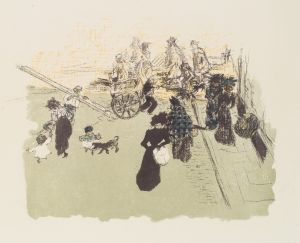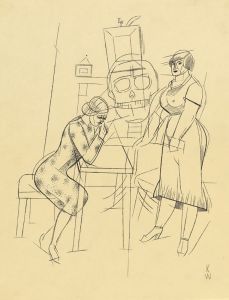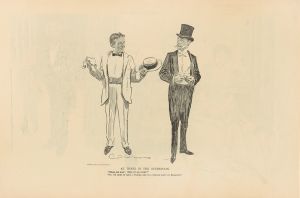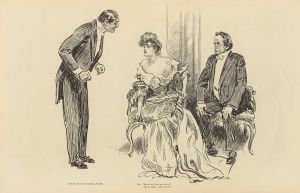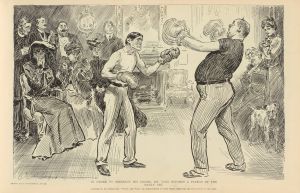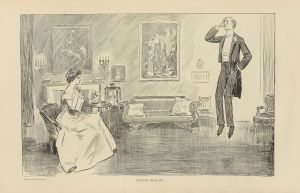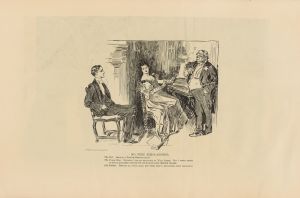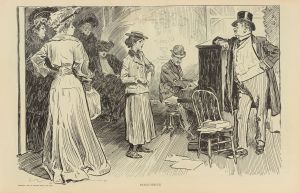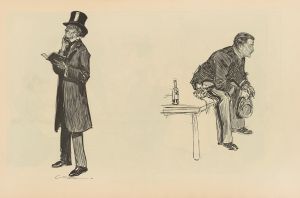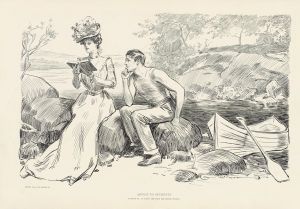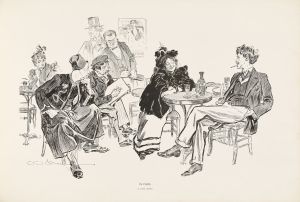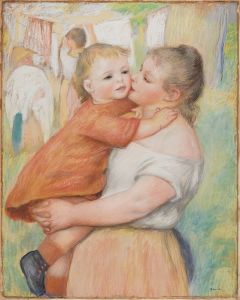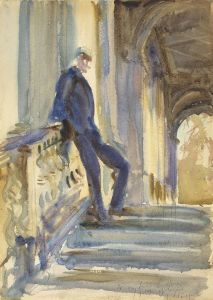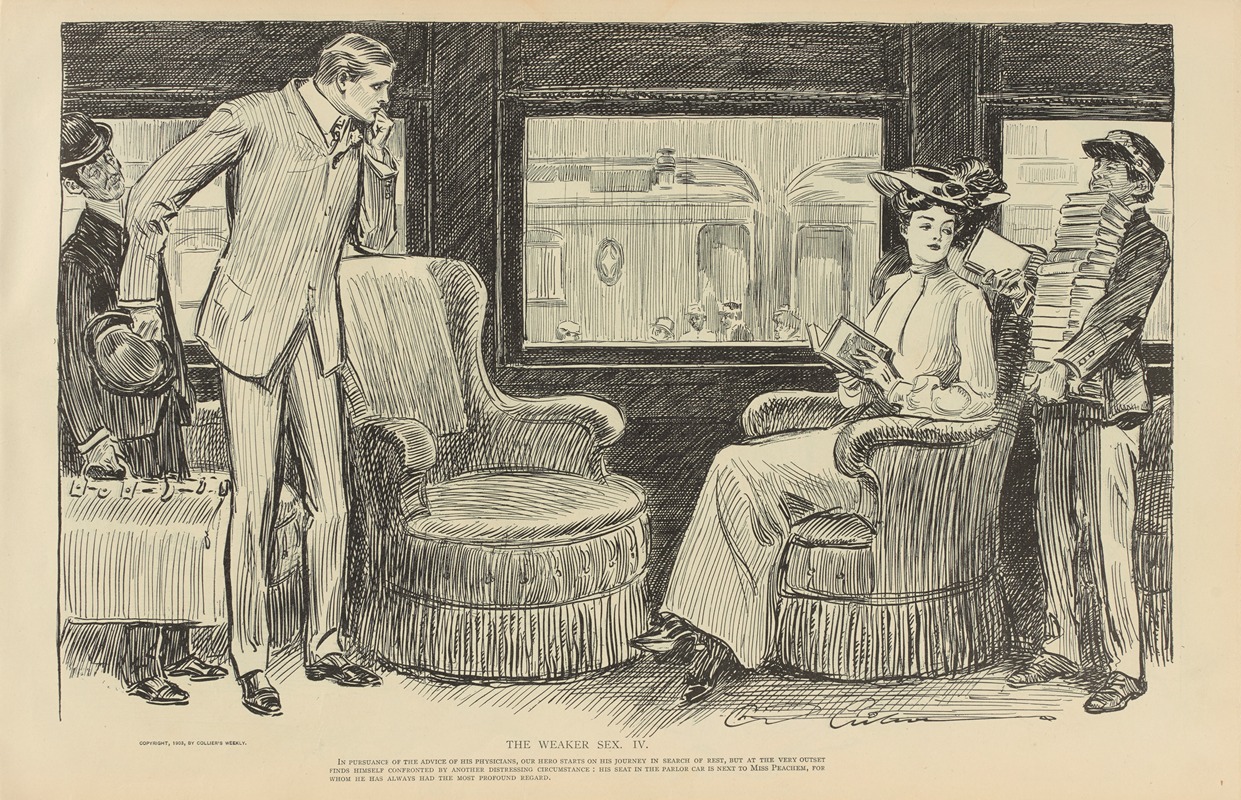
The weaker sex.—IV
A hand-painted replica of Charles Dana Gibson’s masterpiece The weaker sex.—IV, meticulously crafted by professional artists to capture the true essence of the original. Each piece is created with museum-quality canvas and rare mineral pigments, carefully painted by experienced artists with delicate brushstrokes and rich, layered colors to perfectly recreate the texture of the original artwork. Unlike machine-printed reproductions, this hand-painted version brings the painting to life, infused with the artist’s emotions and skill in every stroke. Whether for personal collection or home decoration, it instantly elevates the artistic atmosphere of any space.
Charles Dana Gibson was an influential American illustrator best known for his creation of the "Gibson Girl," an iconic representation of the American woman at the turn of the 20th century. Among his many works, "The Weaker Sex.—IV" is a notable illustration that reflects Gibson's keen observation of social dynamics and gender roles during his time.
"The Weaker Sex.—IV" is part of a series of illustrations that explore the theme of gender relations, often with a satirical edge. Gibson's work frequently depicted women in a manner that both celebrated their beauty and critiqued societal norms. The title "The Weaker Sex" itself is indicative of the ironic tone Gibson employed, as his illustrations often portrayed women in positions of strength and influence, subtly challenging the contemporary notion of women as the "weaker" gender.
In "The Weaker Sex.—IV," Gibson employs his characteristic pen-and-ink style, which is marked by precise lines and detailed shading. This technique allows for a high level of detail and expression, capturing the nuances of the characters' interactions. The illustration typically features a scene with both male and female figures, where the dynamics between them are central to the piece's narrative. Gibson's work often includes elements of humor and irony, inviting viewers to question and reflect on the societal norms of the era.
Gibson's illustrations were widely published in magazines such as Life, Collier's, and Harper's Weekly, reaching a broad audience and influencing public perceptions of gender roles. His work was not only popular in the United States but also gained international recognition, contributing to the global discourse on gender and society.
The "Gibson Girl" became a cultural phenomenon, embodying the idealized image of the independent and modern woman. She was depicted as confident, fashionable, and socially adept, often seen engaging in activities that were traditionally reserved for men. This portrayal resonated with the changing attitudes towards women's roles in society during the late 19th and early 20th centuries.
While specific details about "The Weaker Sex.—IV" may not be extensively documented, it is understood within the context of Gibson's broader body of work. His illustrations remain significant for their artistic merit and their commentary on the evolving social landscape of his time. Gibson's legacy endures as a testament to the power of illustration in shaping cultural narratives and challenging societal norms.
Overall, Charles Dana Gibson's "The Weaker Sex.—IV" is a reflection of his unique ability to blend art with social commentary, capturing the complexities of gender relations with wit and insight. His work continues to be studied and appreciated for its historical significance and its contribution to the discourse on gender and society.





